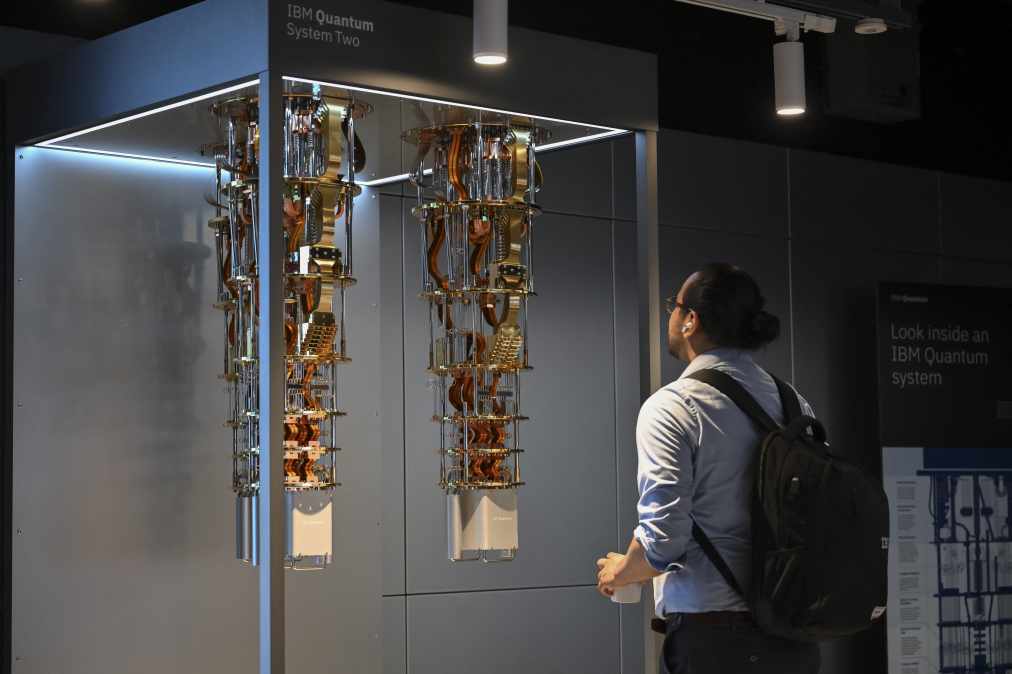Why federal IT leaders must act now to deliver NIST’s post-quantum cryptography transition

In August 2024, the National Institute of Standards and Technology published its first set of post-quantum cryptography (PQC) standards, the culmination of over seven years of cryptographic scrutiny, review and competition.
As the standards were announced, the implications for cybersecurity leaders were clear: The U.S. government must re-secure its entire digital infrastructure — from battlefield systems to tax records — against adversaries preparing to use quantum computers to break our encryption.
This isn’t a theoretical risk; it’s an operational vulnerability. The cryptography that secures federal data today will be obsolete — NIST has already set a deadline to ban some algorithms by 2035 — and our adversaries know it.
A foundational national security threat
Quantum computers are no longer science fiction — they’re a strategic priority for governments across the United States, Europe, China, and beyond, investing billions in their development. While the technology holds promise for scientific and economic breakthroughs, it also carries significant risks for national security.
If just one adversarial state succeeds in building a large enough quantum computer, it would render RSA, ECC, and other foundational cryptographic systems — the algorithms underpinning federal communications, authentication, and data protection — completely obsolete. This would occur not in years or decades that it would take a classical computer today, but in days.
Even before such computers exist, the risk is clear. Intelligence agencies like the National Security Agency have long warned of “harvest now, decrypt later” attacks. That means sensitive U.S. government data — captured today over insecure links or stolen in data breaches — may be stored in data centers with the intention of being decrypted years from now when quantum capabilities mature. This includes classified material, personally identifiable information, defense logistics data, and more.
We are not talking about theoretical vulnerabilities or bugs. We are talking about a complete systemic failure of classical cryptography in the face of a new computing paradigm, and a long-known one at that.
You’ve been warned and instructed
If you work in federal IT or security and haven’t started quantum-proofing your systems, you are already behind. The U.S. government has made its intentions crystal clear over the past three years.
National Security Memorandum 10 (NSM-10), under the Biden administration, was signed in 2022 and mandates that all National Security Systems transition to quantum-resistant cryptography by 2030. This was followed by Office of Management and Budget memo M-23-02 in November 2022, which requires all federal civilian agencies to inventory their cryptographic assets, assess quantum vulnerability, and develop transition plans.
These early instructions were cemented in the NSA’s CNSA 2.0 guidelines, stating that systems protecting classified and national security data must move to quantum-safe algorithms before the 2035 deadline, with many systems already transitioned by 2030, using NIST’s approved cryptographic standards.
This is not a proposal; it is federal policy. The deadlines are set. The threat is recognized and the technology is ready.
The scale is unprecedented but not insurmountable
There hasn’t been a cryptographic overhaul of this magnitude since the transition to public-key cryptography in the 1980s and arguably not since Y2K. But unlike Y2K, there is no fixed date when things will fail. There won’t be a headline or official press release when quantum computing arrives. If you’re waiting for a clear signal, you won’t get one — it will simply be here, and those who haven’t prepared will already be behind.
Just as when the Allies broke the Enigma machine, the first nation to build a cryptographically relevant quantum computer is not likely to announce this to the world and their adversaries.
Quantum-safe transition isn’t as simple as swapping out a cryptographic library. Legacy systems across agencies rely on hardcoded cryptographic protocols. Hardware modules may require firmware upgrades or full replacement. Key management systems will need to be redesigned. Certification and compliance processes must be updated.
This encryption is found everywhere across the technology supply chain and in everyday life. With so many critical government functions, services, systems and departments now run online, just one weak link in the supply chain could bring the whole network down.
Under the NSA’s CNSA 2.0 guidelines, any business that wants to do business with the U.S. government must implement PQC, especially for any new technology procurement beyond 2030. Furthermore, any products using the designated vulnerable encryption will be discontinued by 2035.
Most agencies aren’t prepared, and the private sector vendors they depend on are working hard to provide the tools needed to deliver the transition. What we must be careful of is some suppliers marketing “quantum-safe” solutions that do not meet NIST standards and may introduce new vulnerabilities down the line.
What federal IT leaders must do today
The countdown to 2030 and 2035 has already begun. Federal CIOs, CISOs, and program managers should take the following steps this fiscal year:
- Enforce cryptographic discovery mandates. OMB memo M-23-02 requires all agencies to submit an annual inventory of cryptographic systems. If your agency hasn’t complied or gone beyond minimal discovery, it’s time to escalate.
- Demand vendor transparency. Your suppliers must tell you when and how they plan to support NIST’s PQC algorithms, not “proprietary” solutions. If they can’t, find new ones.
- Fund pilot deployments now. Testing post-quantum algorithms in isolated systems today will reveal architectural bottlenecks and allow for smoother rollout in future years.
- Educate procurement teams. Use the NSA’s quantum-safe procurement guidance to ensure RFPs, contracts, and tech refreshes explicitly require PQC readiness.
- Treat PQC as a cybersecurity budget line item, not a future capital project. Quantum risk is not hypothetical, it’s live and needs action to address it today.
The bottom line: This is a national defense imperative
You don’t have to believe the quantum hype — you just have to follow your own government’s threat assessments.
Federal legislation, including the Quantum Computing Cybersecurity Preparedness Act, signed into law in December 2022, requires agencies to prepare for the migration.
If your systems still rely on RSA, ECC, or other legacy algorithms without a transition roadmap, you are not defending them — you are leaving them open to attack.
The NIST standards show that with one year of progress behind us, there are five years of opportunity ahead.
Ali El Kaafarani is the founder and CEO of PQShield, a global leader in post-quantum cryptography.






